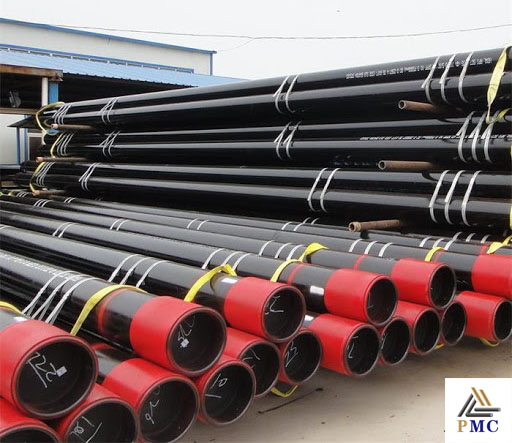
Steel Grade and Performance of Petroleum Casing
Petroleum special pipe is mainly used for oil and gas well drilling and oil and gas transportation. It includes oil drill pipe, oil casing pipe, and oil suction pipe. Petroleum drill pipe is mainly used to connect drill collars and drill bits and transmit drilling power.Petroleum casing is mainly used to support the well wall during the drilling process and after completion of the well, so as to ensure the progress of the drilling process and the normal operation of the entire oil well after completion of the well.The oil pumping pipe mainly transports the oil and gas at the bottom of the oil well to the surface. The oil casing is the lifeline for maintaining the operation of the oil well. Due to the different geological conditions, the downhole stress state is complex, and the combined effects of tensile, compressive, bending, and torsional stresses act on the pipe body, which places high requirements on the quality of the casing itself. Once the casing itself is damaged for some reason, it may lead to a reduction in production of the entire well, or even scrap.

According to the strength of the steel itself, the oil casing can be divided into different steel grades, namely J55, K55, N80, L80, C90, T95, P110, Q125, V150, etc. Different well conditions and well depths also use different steel grades. In a corrosive environment, the casing itself is required to have corrosion resistance. Where the geological conditions are complex, the casing is also required to have anti-collapse properties. 27MnCrV is a new type of steel for the production of TP110T steel grade oil jackets. The steel grades for conventional production of TP110T steel grade oil jackets are 29CrMo44 and 26CrMo4. Compared with the latter two, 27MnCrV contains less Mo element, which can greatly reduce production costs.
27MnCrV steel's AC1 = 736 ℃, AC3 = 810 ℃, the heating temperature is selected between 740-810 ℃ during sub-temperature quenching For sub-temperature quenching, the heating temperature is 780 ℃, and the holding time for quenching and heating is 15min; after quenching, the tempering temperature is 630 ℃ and the heating and holding time is 50min. Due to sub-temperature quenching in α + γ two phases zone heating, quenching in a state where part of undissolved ferrite remains, and while maintaining higher strength, toughness is improved.
Using the normal austenitizing quenching process to produce 27MnCrV, there is obvious high temperature tempering brittleness, resulting in low impact toughness and instability. Quick cooling after tempering is adopted to avoid high temperature brittleness and obtain toughness. The sub-temperature quenching method effectively improves harmful elements and impurities and improves toughness through incomplete austenitization of steel grades. The requirements for heat treatment equipment are relatively strict, and additional costs are required. The low temperature quenching is lower than the conventional temperature, which reduces the stress of quenching and thus reduces the deformation of quenching. This ensures the smooth operation of heat treatment production and provides good raw materials for subsequent wire processing.
Go here to learn more about " Quality Defects and Prevention of Oil Well Pipe"


